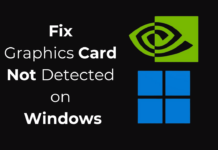Earlier in may, the tech giant Google circulated a draft proposal to completely kill Adobe Flash by blocking the plugin and prioritizing HTML5 by the end of this year. Hence, Google is finally going ahead with that plan to minimize the Flash with a framed disabling of the plug-in through the multiple versions of the Google Chrome.
Google To Finally Kill Flash By The End Of 2016
Everyone knows that flash has many harmful effects in browsers and now this technology is also become outdated, but it is still present in many web sites and consume resources abnormally. Hence, all the web browsers have started to move towards abolition of flash and Google Chrome has now announced an important step, that from December it will no longer support Flash, it means that it will completely wipe out flash from Google Chrome.
According to the reports, the version 55 of Chrome, which will be launched in December, will not run any Flash content, opting to use HTML5. Only in specific situations, flash will be used, always with the express indication of the user.
But already from version 53, which will be launched in September changes will begin. In this version only the essential Flash elements will be executed, being eliminated the small elements that will run in the background and which are the most resource consuming.
As we all know that the tech giant Google’s statistics do not lie. These small elements represent 90% of the Flash files that are loaded in Chrome. They are used mainly for tasks associated with the monitoring of users and control some elements of web pages and can or should be replaced with the other programming languages.
It is precisely here that the tech giant Google will focus until it can completely eliminate the Flash content, leading to them to be replaced by HTML5 and other modern techniques and, above all, more efficient.
However, Google is committed to eliminating the Flash from its web browser Chrome and to do this it starts working in partnership with Adobe to make this transition to be as transparent as possible, so that none of the users lose access to the Internet contents.



